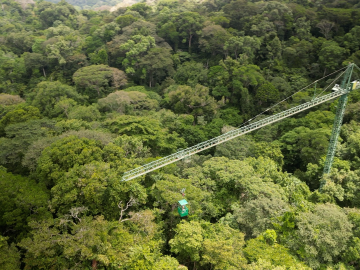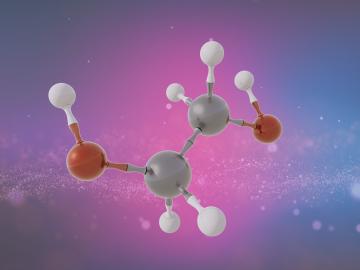
Filter News
Area of Research
- Advanced Manufacturing (3)
- Biology and Environment (19)
- Computational Biology (1)
- Computational Engineering (1)
- Computer Science (2)
- Energy Science (44)
- Energy Sciences (1)
- Fusion and Fission (3)
- Fusion Energy (1)
- Isotopes (2)
- Materials (13)
- Materials for Computing (1)
- Mathematics (1)
- National Security (2)
- Neutron Science (5)
- Nuclear Science and Technology (1)
- Supercomputing (10)
News Type
News Topics
- (-) Biomedical (11)
- (-) Composites (11)
- (-) Energy Storage (32)
- (-) Environment (48)
- (-) Frontier (1)
- (-) ITER (3)
- (-) Mercury (3)
- 3-D Printing/Advanced Manufacturing (34)
- Advanced Reactors (13)
- Artificial Intelligence (16)
- Big Data (17)
- Bioenergy (17)
- Biology (21)
- Biotechnology (4)
- Buildings (21)
- Chemical Sciences (13)
- Clean Water (14)
- Computer Science (42)
- Coronavirus (11)
- Critical Materials (12)
- Cybersecurity (3)
- Emergency (1)
- Exascale Computing (1)
- Fossil Energy (1)
- Fusion (9)
- Grid (22)
- High-Performance Computing (12)
- Hydropower (6)
- Irradiation (2)
- Isotopes (5)
- Machine Learning (14)
- Materials (36)
- Materials Science (34)
- Mathematics (3)
- Microscopy (11)
- Molten Salt (5)
- Nanotechnology (12)
- National Security (3)
- Neutron Science (27)
- Nuclear Energy (19)
- Partnerships (2)
- Physics (4)
- Polymers (10)
- Quantum Computing (5)
- Quantum Science (11)
- Security (1)
- Simulation (9)
- Space Exploration (10)
- Statistics (1)
- Summit (8)
- Transportation (36)
Media Contacts

Scientists at ORNL have developed a vacuum-assisted extrusion method that reduces internal porosity by up to 75% in large-scale 3D-printed polymer parts. This new technique addresses the critical issue of porosity in large-scale prints but also paves the way for stronger composites.

The ForWarn visualization tool was co-developed by ORNL with the U.S. Forest Service. The tool captures and analyzes satellite imagery to track impacts such as storms, wildfire and pests on forests across the nation.

Researchers have identified a molecule essential for the microbial conversion of inorganic mercury into the neurotoxin methylmercury, moving closer to blocking the dangerous pollutant before it forms.

Scientists at ORNL are studying the failure mechanisms of a new solid electrolyte battery to enhance long-term storage for renewable energy, aiming to make wind and solar power more reliable for the electric grid.

Oak Ridge National Laboratory researchers are using a new bioderived material to 3D print custom roosting structures for endangered bats.

Scientists using high-resolution aerial scans and computational modeling concluded that wildfires, storms and selective logging have become key drivers behind rainforest carbon emissions, outpacing clear-cutting practices.

A research team led by the Department of Energy’s Oak Ridge National Laboratory demonstrated an effective and reliable new way to identify and quantify polyethylene glycols in various samples.

ORNL scientists develop a sample holder that tumbles powdered photochemical materials within a neutron beamline — exposing more of the material to light for increased photo-activation and better photochemistry data capture.

Groundwater withdrawals are expected to peak in about one-third of the world’s basins by 2050, potentially triggering significant trade and agriculture shifts, a new analysis finds.

Inspection technology developed by Oak Ridge National Laboratory will help deliver plasma heating to the ITER international fusion facility.


